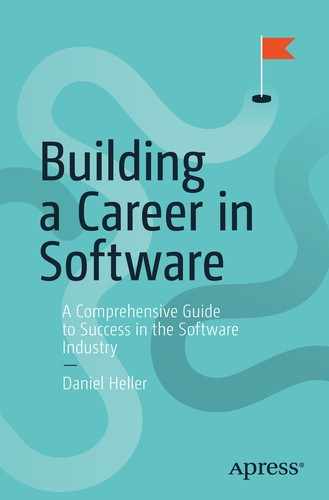Public speaking is a regular part of our jobs as technologists, for purposes like training junior colleagues, persuading teams to follow our recommendations, and sharing knowledge with peers. Like writing, public speaking is foreign and alarming to many engineers, which makes it a special opportunity to impress your colleagues and build your reputation; I advise you to seek out as many opportunities to give talks as you can, because practice is the only way to improve (conditional of course on having a subject of interest for your audience).
Below are techniques I use to prepare and deliver my own presentations. You’ll find that they overlap with the principles of technical writing and with good reason—your goal is in both cases to engage and entertain your audience, communicate something valuable to them with the greatest possible clarity, and use their time effectively. I encourage you to find more resources on the subject, but I’ve gotten by fine on the following.
Start with a brief anecdote, humorously delivered if possible: Take your audience’s attention right away; it’ll be easier to hold than regain. The anecdote should be topical, not just funny—it should explain why you’re interested in the subject or why they should be.
Have a clear purpose: You should know what you want your audience to walk away with, and right after your anecdote, you should tell them exactly what that is.
Organize your talk into clear sections: Just as with writing, a clear structure helps your audience contextualize and understand what you’re saying at any given moment in your talk. I recommend an agenda slide early.
Own the room: Speak loudly, and stand up tall with a confident posture. Your audience will become bored if you send the message that you don’t feel that you deserve to address them. Conversely, they will perk up if they feel that you are addressing them with vigor and passion.
Stick to three to five bullets per slide (usually): If you include much more, your audience will become overwhelmed reading. Of course, no rule is ironclad.
Never, ever read your slides verbatim: It’s hard to think of something more painful than watching a speaker simply read the words off their slide. Presentations are opportunities to deliver energy, passion, and wit that you couldn’t bring across on the printed page. Your slides should be minimal—enough that a reader can get the gist of your talk—but none of the flavor.
Interact with your audience: I find that asking questions of the audience and demanding answers are a good way to energize your viewers, because they get the pleasure of being challenged and becoming participants. You can ask a question with a surprising answer to open a section; you can have a quiz when you finish a section; you can warm up your talk by asking a (small) audience questions about themselves. This technique can be used a handful of times per talk.
Move fast: In an era when people can and will pull out their phones when they get bored, it’s better to move too fast for your audience than too slow. Many people disagree with this advice, but I think it’s far better to risk losing a small percentage of your audience than to let them fall asleep.
I hope and believe my last crumb of advice is slightly less facile than it seems: have fun. With practice, you’ll find yourself getting in the zone and enjoying the spotlight, and your enjoyment will thaw your audience; you should enjoy your own jokes and look forward to a chance to connect with your audience and impress them. It takes time, but you can 100% get there—I have, and it certainly isn’t where I started.
